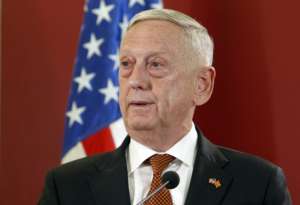
Mattis stands up new Pentagon office to safeguard defense information
Defense Secretary James Mattis has appointed a new task force to cut theft and misappropriation of DoD information, reporting directly to the deputy defense...
Sounding new alarms about the vulnerability of sensitive Defense Department information, Secretary James Mattis ordered the standup of a new office to protect the agency’s technology investments from theft by rival nation states.

In an Oct. 25 memo, Mattis said the Protecting Critical Technology Task Force (PCTTF) will need to take concrete action on what he termed a “critical” problem, noting that U.S. companies lose an estimated $600 million in intellectual property each year to foreign theft and expropriation.
“Far worse, the loss of classified and controlled unclassified information is putting the department’s investments at risk and eroding the lethality and survivability of our forces,” he wrote. “Solving this problem will require an integrated effort across the department.”
The new task force borrows manpower from more than a dozen other DoD organizations and will report directly to Deputy Defense Secretary Patrick Shanahan and Gen. Paul Selva, vice chairman of the Joint Chiefs of Staff.
Shanahan will appoint a long-term director and deputy director for the group, but in the meantime, it will be led by Maj. Gen. Thomas Murphy, a senior official in the office of the Air Force’s deputy chief of staff for logistics.
Mattis told the PCTTF he wants its members to start their work with two “sprints” — one lasting 30 days, the second for 90 days — in order to tackle “basic problems.” Although, the memo does not specify precisely what problems he has in mind.
“While the sprints are underway, the PCTTF will also address broader systemic issues, and to this end, leverage the previous work done by the Maintaining DoD Technology Advantage Cross Functional Team, which is now dissolved,” he wrote.
It’s unclear exactly how the new task force’s work will differ from the cross functional team it’s replacing. Those teams were mandated by Congress in 2017 to help solve various cross-cutting organizational problems across the Defense Department. According to the Government Accountability Office, they have been slow to meet lawmakers’ original intent.
However, the memo suggested the new task force may have broader representation from various DoD organizations, compared to the cross functional teams, which have tended to have only between 5 and 12 members each.
Mattis said the task force will be comprised of a “small, dedicated staff” drawn together from the offices of:
- The headquarters of each of the military departments, plus the office of the Commandant of the Marine Corps
- The Joint Staff
- Undersecretary of Defense for research and engineering
- Undersecretary of Defense for acquisition and sustainment
- Undersecretary of Defense for policy
- Undersecretary of Defense for intelligence
- Cost Assessment and Program Evaluation (CAPE)
- DoD chief information officer
- Defense Intelligence Agency
- Defense Security Service
- Army Counter Intelligence
- Naval Criminal Investigative Service
- Air Force Office of Special Investigations
Copyright © 2025 Federal News Network. All rights reserved. This website is not intended for users located within the European Economic Area.
Jared Serbu is deputy editor of Federal News Network and reports on the Defense Department’s contracting, legislative, workforce and IT issues.
Follow @jserbuWFED
Related Stories





